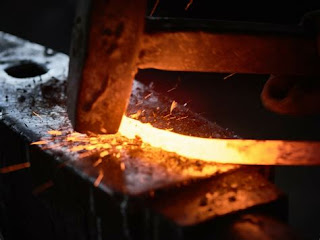WHY Acupuncture "Needles" do NOT hurt?
Acupuncture is insertion of “dry” thin "filiform" needles into the body at specific and correlating points to move the “Qi, blood and body fluid” creating balance.
Acupuncture “needles” are misunderstood: American’s experience with needles like injection or “wet” hollow needles which cause physical trauma by tearing a hole in the tissue for injecting or drawing a substance is not always pleasant. Similarly sewing needles and pins, though not hollow, are not structured to slip through the skin cells like the ultra-flexible, ultra-thin, hair-like “dry” Filiform needles used by most Acupuncturist.
Most Americans did not grow up experiencing Acupuncture needles, and are uninformed about the great benefits of Acupuncture, so they tend to be anxious or not consider experiencing Acupuncture because of their previous experience with other unrelated needle types that have illicit pain for them.
Needling Techniques / Style by training:
TCM (Traditional Chinese Medicine) is one of the most widely trained type of Acupuncture and basically the gold standard in the US. It is what the US National and State Board Exams are based.
Generally TCM is considered more aggressive than Japanese or Five Elements style BUT this is not the case in the US. TCM practitioners use various levels of depth depending on the structure which they are working with from energetic and emotional to more physical and structural. They follow energetic “Channels” or “Meridians” (lines/pathways) Each point along a line (12 major lines) is assigned a specific insertion angle and depth to do “no harm” to the patient.
Note that most US TCM practitioners do not use aggressive techniques, they tend toward more gentle, less invasive Japanese style needles and techniques even when practicing as TCM.
TCM is a complete and wholistic practice, considering food therapy, herbal / nutrients, movement therapy like QiGong / TaiQi. They are trained in keen observation and diagnostic skills, considering colors, smells/scents, complexion/skin, movement, eyes, breath, sounds / voice tone, 12 pulse points / palpation (touch), tongue appearance (color, nature, coating), etc.
Being a complete effective healthcare system dating back almost 3000 years, Acupuncture has been known to address all aspects of the body: energetic, emotional, structural/physical, organs, processes including respiratory, circulatory (heart/blood/body fluid, blood pressure), digestive (enzymes, blood sugar), eliminative (intestinal issues), neurological (brain/mind/stroke recovery), auditory, sensory, hormonal (PMS, infertility, prostate) etc.
All types of health changes/conditions: chronic (old) / acute (recent / new) issues, pain, inconsistencies like deficiencies/excesses, temperature / fever / chills (heat/cold), fluids (thirst / perspiration / urination), sleep cycle, cognition (brain activity), vision, sensations, etc.
TCM incorporates Acupuncture needles, micro-current / Electro-Stimulation (“e-stim” which helps movement of Qi/Blood/Body Fluid to open up “blockages” which cause dis-ease), Moxibustion (moxa) / warming herb used on or above skin, cupping (suction cups which draw up blood to affect muscles / pain or illicit immune response), Cold Laser, LED / Light Therapy, Trigger Point Injection, Tui-na (TCM style massage), Food Therapy / Chinese Herbal Medicine / Nutrition, etc.
Japanese Style Acupuncture is considered a gentler form of acupuncture. Smaller needles, with more shallow or no insertion, and less stimulation. Moxibustion (warming herb) is commonly used.
Generally Japanese-style would not work with herbal/nutrition but refer to other practitioners however, in US, since they are trained to pass the herbal board exams, so they may included in their practice similar to TCM practitioners.
Five Element Acupuncture
is rooted in ancient wisdom of TCM/Japanese Acupuncture and adapted by Professor J.R. Worsley for the modern world. This system utilizes how the ancients observed the fundamental elements of creation, wood, fire, earth, metal and water, to create life’s natural mysterious order. When these five elements manifest within us in a balanced and harmonious state, we experience health, well-being and the joy of being alive.
Dry Needling
Most recently created term to describe Acupuncture performed within the Physical Therapy profession allowing them to incorporate Acupuncture needling in their practices with minimal training and without training required for Acupuncture licensing.
Generally it is more aggressive utilizing longer, thicker needles, more stimulation, more painful techniques to affect muscle, connective tissue structure or Trigger Point system (point system that closely parallels acupuncture point system)
Who can perform Acupuncture in the US?
Fully Trained:
Licensed Acupuncturist have a Masters or Doctorate and complete appx. 3000 hrs of training and education in Chinese Medicine similar to a 4 year Western Medical Degree including didactic and clinical education.
Minimally Trained:
Physical Therapists: Considered Dry Needling / Trigger Point Therapy
0 to ave. 50 hrs training, some states do not allow.
NOTE: PT’s ability to practice dry needling/ trigger point therapy is very controversial and is constantly challenged and changing due to the minimal training.
Medical Doctors / Chiropractors: Considered Medical Acupuncture.
104 hours online Acupuncture training meets most state requirements to sit for Acupuncture exam.
Feel free to reach out by text with your name and question / health concern if you think I can help you...Check out my Testimonial Page .
Balance is everything!
HealthyHumanOnline...
Patricia J Ahner, AP, LAc, LMT, L.Esth., Reiki Master
Acupuncturist, NeuroMuscular Therapist, Skin Care, Reiki
https://medicalalternative.weebly.com/about1.html
http://www.get-relief.com/bio.html
*I am recommending that you consult your allopathic doctor before you make any changes, but keep in mind that allopathic doctors are not alternative therapist and most only know their particular field. If you are on prescription drugs, you have no choice but to follow the doctor's orders but try to implement what you can with the other suggestions and continue to ask if you can be safely taken off the medication or if there is a drug free way to address your issue. Seek out an Alternative Therapist to complement your treatment with advise on diet and nutrition, etc.





Comments
Post a Comment